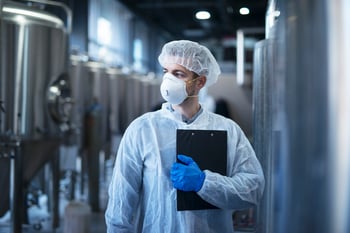 The pharmaceutical automation market is projected to reach $18.2 billion by 2029 at a CAGR of 12%. The expanding market is poised to revolutionize quality control by introducing advanced technologies to help enhance efficiency and compliance. Technologists will play a pivotal role in implementing automation in the field going forward. Let’s explore four ways automation has already improved pharmaceutical quality control.
The pharmaceutical automation market is projected to reach $18.2 billion by 2029 at a CAGR of 12%. The expanding market is poised to revolutionize quality control by introducing advanced technologies to help enhance efficiency and compliance. Technologists will play a pivotal role in implementing automation in the field going forward. Let’s explore four ways automation has already improved pharmaceutical quality control.
1. Identifying Product Defects
Defective pharma products can pose health risks to patients. That’s why pharma companies are under intense scrutiny from regulatory agencies, like the FDA, to ensure their products are defect-free. Companies that fail to adhere to standards can expect to face stiff consequences. The consequences can range from fines and product recalls to, in extreme cases, complete manufacturing suspensions. Therefore, ensuring products are free of defects is paramount.
That’s where artificial intelligence comes into play. AI-powered computer vision systems can be trained to inspect pharmaceutical products for visual defects or abnormalities – including cracks, discolorations, or inconsistencies in shape and size. Often defects are missed as the result of human error. Computer vision systems - trained on millions of data points - effortlessly differentiate between faulty and functional products, eliminating the uncertainty that can lead human inspectors to make errors.
2. Streamlining the Search for Active Ingredients
The conventional method of screening for active ingredients typically involves a series of laboratory-based experiments and tests. Lab experiments can be time, resource, and talent-intensive, particularly when handling numerous compounds. While lab experiments are irreplaceable, merging traditional and modern methods (automation) elicits a more efficient exploration of potential active ingredients.
Researchers in Switzerland developed an algorithm to streamline the search for active ingredients. The algorithm was tested in a study designed to find potential protein targets for marinopyrrole A, a bacterial molecule known for its antibiotic properties. Professor Gisbert Schneider, the lead researcher on the study, revealed that the model performed exceptionally well - outperforming conventional methods in identifying ‘meaningful pairs of active ingredients and target proteins.’
3. Accelerating Colony Counting
Colony counting is the process of tallying visible clusters formed by microorganisms under a microscope. Scientists use colony counting in quality control to ensure the safety of pharmaceuticals, food, and cosmetics. In fact, processed foods we consume regularly like canned vegetables and dairy products, undergo meticulous colony counting to ensure they are free from harmful microorganisms. Frequently, a method known as 'surface sampling' is used, wherein the microbiomes under investigation are placed on pre-validated plates to ensure cross-validation. Additional techniques involve error sampling, where air is aspirated while counting colonies, and water contamination tests that scrutinize the water used in the testing process. These rigorous tests are conducted to monitor the environment.
It’s important to note that traditional colony counting methods tend to be inefficient and error prone. Scientists have to prepare the plates with microorganisms, incubate the plates, inspect the plates for colony formation, record the results, and complete calculations. Inspecting a single plate can take several hours. Now, consider the substantial time investment required when experimenting with multiple samples. Moreover, since manual colony counting relies on the human eye and dexterity, the results are often prone to human error.
That’s where automation comes into play, helping limit the number of human errors. Computer vision software, paired with machine learning algorithms, are trained to scan plates, improving colony count recognition. Scientists can now ‘point -and-click’ colony counts using computer software, rather than relying on their naked eye. However, it's crucial to note that these machines aren't infallible, occasionally missing colonies at the plate border. Despite this, automated colony counting via advanced technology remains a potent tool for scientists in quality control.
4. Regulatory Compliance Help
Currently, the process of verifying documents for regulatory compliance is labor-intensive. Trained professionals carefully review each document, scrutinizing accuracy, completeness, and regulatory adherence. However, human fallibility opens the possibility of overlooking crucial details, leading to potential infractions.
In the future, algorithms will be employed to automate documents verification for regulatory compliance. Reducing human error by cross-referencing batch records and validating proper procedures in accordance with GMP. Additionally, implementing AI in the creation of audit trails and traceability systems enhances transparency and accountability.
Final Thoughts
The growing use of advanced technology will be the driving force behind optimizing quality control. Prompting the life sciences industry to seek professionals with data science and computer science expertise to spearhead these advancements. If your company is looking to locate elite talent in these areas, contact our team of experts.



